 | No one knows more about improving bat speed than Bob Alejo (former strength and conditioning coach of the Oakland A's and now the Personal Conditioning Coach of NY Yankee's Jason Giambi). Learn how Bob gets his athletes to have a blazing fast swing! |
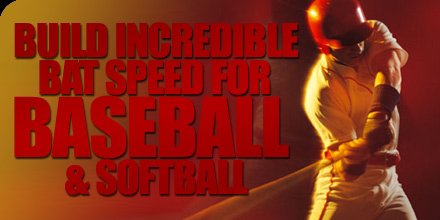 By: Bob Alejo
By: Bob AlejoTo be honest, a quick bat does not ensure a hitter a great average either. We know a good hitter has many more qualities than strength and bat head speed. My point is to remember the other qualities which are important parts of hitting before expecting increased bat head speed to cure your average!
Now that we understand what bat speed can and can not do, here's how to create a quicker, stronger bat.
 Abdominal Training
Abdominal Training
The trunk (abdominals and low back) creates a powerful twisting motion during the swing. Rotational torque provides speed and momentum to the arms and eventually the bat head. Like other muscles, it is necessary to develop strength by using resistance. A common mistake with abdominal training is to perform body weight resisted exercises and expect the abdominals to continually gain strength.
In the beginning you will develop a certain amount of strength. However, after a while the exercises become nothing other than calisthenics or maintenance type movements. To develop strength you must add some sort of resistance the movement-as is the case in all exercises. The good news is that you can use most of the same traditional stomach exercises plus added weight, to get the desired results.
The three areas for you to concentrate on are the lower, upper and oblique abdominals.
Upper Abdominals
Weighted crunches (non-weighted crunches shown) - Lying on your back with legs up in the air, knees bent at 90 degrees, hold a weight of your choice at straightened arms length. Using only your upper abdominals, raise only the upper body, keeping your back flat on the ground. Three sets of 20-40 repetitions.
Lower Abdominals
Hanging leg raises - Hang from an overhead bar, with your feet not touching the ground. Your grip should be about shoulder width. Contracting the lower abdominals, lift the legs together, knees bent at 90 degrees, so the knees are just above waist height. Lower and repeat. Three sets of 10-25 repetitions.
* This a difficult exercise which does not require much weight to increase the difficulty. Use ankle weights for the resistance.
* Do not rock back and forth to make it easier to raise the legs.
* To increase difficulty without adding weights, keep your legs straight while lifting them.
Rotational Abdominals
Standing weighted twists - Put yourself into an athletic stance with your feet spread at a comfortable distance and your knees slightly bent. Hold a weight about six to 12 inches in front of your body. After a slow warm up, begin to twist at the waist (do not twist or bend at the knees) as rapidly as possible. The key to rapid movement is maintain a low, balanced stance and make sure your shoulder reaches the chin on the twist. Three sets of 20-40 repetitions.
 Leg Strength
Leg Strength
Never underestimate the value of leg strength for good, powerful hitting. The legs do not appear active. And in terms of movement, they really are not. But it is the strength of the legs that enable the abdominals and trunk in general, to promote bat speed.
 As the swing begins, the stride is in place and the body begins to rotate. Without a firm base, the body will not be able to generate any strength from the legs into the trunk. Simply, the force is generated from the ground, into the legs, to the trunk and finally the bat.
As the swing begins, the stride is in place and the body begins to rotate. Without a firm base, the body will not be able to generate any strength from the legs into the trunk. Simply, the force is generated from the ground, into the legs, to the trunk and finally the bat.Without leg strength, the force necessary to start a powerful bat is not produced. To take it a step further, the swing might be flawed due to only upper body generation and nothing to stabilize the legs.
Basic leg strength has been outlined in previous articles. Safe to say, do not expect to have the best swing or the most powerful bat if you are only going to work on the upper body and ignore your legs.
Demonstrations

1. Plate Jump
- This exercise will allow you to jump harder than you may want. By forcefully swinging the weights forwards, the weights end up pulling the body upward and forward. The body must match the speed of the weights otherwise you would fall over forwards. This exercise teaches you to jump harder and faster on each attempt. Make sure to reset before each jump. This exercise can be performed for height, distance, laterally, off a single leg, or with different amounts of weight.
- Starting Position: Stand upright with a 10 pound plate in each hand. Execution: Swing the plates backwards as you let your body bend downward in a countermovement. Next, swing the plates forcefully forwards and upwards as you begin the jump. It's important to swing the plates all the way up to head lever or higher. You can think of throwing the plates in front of you and letting the weight carry you. This exercise can be performed for 3 or 4 sets of 8-12 jumps.
- This exercise works on switching from a slow eccentric contraction, to a fast and force full concentric contraction. The body will be forced to create a large amount of force in a short amount of time. A good variation for this exercise is to have the athlete close their eyes. This makes it harder to time when the dumbbell will touch the ground. Starting position: Stand upright while holding one end of a dumbbell with both hands. The dumbbell will hand with the free end facing downwards.
- Execution: On the descent let your arms relax and hang down. Squat back slowly, don't allow your knees to travel forwards, keep your lower back flat. The dumbbell will eventually touch the ground in between you feet, not in front of them. The touching of the dumbbell to the ground should be thought of as a trigger, once you feel this jump straight up as fast and as hard as possible. Do not bend your arms during the jump. This exercise can be performed for 3-4 sets of 8-15 reps.
- This exercise is similar to how Louis Simmons has defined a box squat. The muscles are in a relaxed pre-working state at the beginning of the exercise. The body must overcome the weight and inertia of both the body and external weight. The box supports the weight of the body and dumbbell at the beginning of contraction, not the muscles. A large amount of force is created from this relaxed position in a short amount of time. This exercise relies more on starting strength than the traditional box squat since the athlete actually jumps. Starting position: Place a dumbbell across your shoulders. The elbows will be facing straight ahead with the fingers on top of the dumbbell.
- Execution: With the back of your heals placed against the box, sit way back onto the box. Do not round your low back on the box, keep a flat and tight lower back position. As you sit on the box relax your hip flexors, but keep everything else tight. From this position jump as hard and as fast as possible straight up. Reset after each jump. Do not use a barbell for this exercise, with a barbell the elbows and arms are turned out and opened up. This is a quick jump and you want to keep the body tight throughout the jump. A barbell will put the body is a vulnerable position, we are not working with heavy weights and there is no reason to add a balance element to this exercise. This exercise can be performed for 3-4 sets of 8-12 reps.
- This exercise is a combination of the DB Swing and the Pull Through. You get a big stretch of the posterior chain before a powerful hip extension. It's important to reach as far back as possible on the descent and to initiate the jump with the hips, not the arms. Starting position: Take a wider than shoulder width stance and hold a dumbbell in the same way as in the frog squat.
- Execution: Swing the dumbbell down and backwards between your legs, drop your head and reach as far back as possible. The jump is initiated by throwing the hips forwards and up, let the weight lag behind. The extension of the hips will speed up the swing of the dumbbell. As the dumbbell speeds up it will pull on the body similar to the plate jump. The last part of the jump will be sped up by the dumbbell pulling on the body. A large amount of force will be created during the late phase of the jump. This exercise can be performed for 3 sets of 6-10 reps.
- Execution: This exercise is the same as the traditional triple jump except you do not have an approach. With a shoulder width stance, start with a horizontal jump. Land on one leg, then jump forcefully forwards. Next, land on the other leg and jump forcefully forwards again, then land softly with both legs. Reset after each attempt. This exercise can be used as a training exercise or as a test. It's a great measure of single leg power, much better than the single leg vertical jump or horizontal jump. This is a great exercise to prepare the body for bounds or depth jumps. This exercise can be performed for 2-3 sets of 4-8 reps.
- Starting position: This exercise is just like the hang clean except it's performed with a finger grip. Hold the barbell with only your fingers, release your thumbs and open your hands. Stand up right with the barbell. Execution: On the descent keep your knees in the same place. Do not allow the knees to travel forwards, let the bar go straight down as the legs are pushed backwards out of the way of the bar path. Let the bar travel down to the level of the knees, keeping the lower back flat. Now, forcefully extend the hips, knees, and ankles, but do not allow the arms to lift or bend. After full extension bend down, throw your elbows forwards and up, catch the bar on your shoulders. The hands never close during this exercise, they start with the fingers holding the bar and end with the fingers under the bar.
- This exercise does two things for the athlete. It teaches you to not use your arms to pull the bar up, thus the hips become responsible for getting the bar up. Once you begin lifting the bar with your arms, the brain sends more impulses to the arms and less to the hip muscles. So you end up lifting with the smaller and weaker bicep muscles instead of the bigger, more powerful hip muscles. When learning the Olympic lifts you will be able to lift more weight with your arms than with your legs. So many people never learn to do these lifts with their legs and thus will plateau early. Once the body adapts neurally, the inter-muscular and intra muscular coordination will improve in the lower body and you will be able to lift heavier and heavier weight. This will not happen if you continue to lift with your arms and take the hips out of the movement.
 | ||
| What's A Plateau? A level of attainment or achievement in weight loss or bodybuilding where one gets "stuck in a rut", barring further progress or noticable results. As obvious as it may seem, if you continue to do the same thing, you will continue to get the same results. Click here for tips on breaking through plateaus. | ||
- Second, this is a great exercise for grip strength. For some reason grip training has been neglected recently. A strong grip is invaluable in many sports, especially explosive sports. Even more importantly a strong grip protects the elbow in overhead throwing movements. This exercise can be performed for 3-4 sets of 3-6 reps.
- Starting position: Take a shoulder width stance and point the toes straight ahead. Hold each DB up to your shoulders with your elbows pointing straight ahead. Allow one end of the DB to rest on each shoulder. Execution: Drop straight down a few inches and forcefully jump and extend up. Then, as quick as you can, drop straight down into a lunge position. One leg should go forwards and the other goes straight back. Catch the weight with your arms fully extended in the bottom position. Stand up with the arms extended until you are upright, take small steps up. The arms should be fully extended and behind the ears in the catch position.
- This exercise is all about getting down quick. Anytime you see "jerk," it means get down quick, not push up. The momentum of the jump should get the weight going up; the rest of the exercise is about getting underneath the weight before you catch it. This exercise can be performed for 2-4 sets of 8-10 reps.
- Execution: Take a barbell across your shoulders with one foot forwards and the other foot backwards. Allow your knees to bend slightly and quickly switch foot positions with a little jump. Switch foot positions back and forth quickly and forcefully.
- This is a calf exercise and gets a good stretch in the muscles. Slowly add weight to the barbell. This exercise can be performed for 3 sets of 15-25 reps.
- Starting position: Get in a half squat position with your arms in front of you. Execution-from this static position, jump up and onto the box. You want to jump from a still position, do not allow any counter movements. Land in the middle of the box and stand all the way up. Reset after each jump.
- This exercise teachers you to create a large amount of force from a static isometric position. The body starts in an isometric state where you are supporting the weight of the body, then you forcefully overcome the inertial and weight of the body. This exercise can be performed for 2-4 sets of 6-10 reps.
- Execution: This exercise is actually two jumps. Start away from the box and perform a horizontal jump to the box. Upon landing, as fast and as hard as possible jump up onto the box. This second jump needs to be as fast as possible, you can think of the ground being on fire and you need to get up quick. Land softly in the middle of the box and stand upright. Reset after each jump. This exercise is a stretch-reflex exercise, but it's not as intense as a depth jump. It's a great exercise to prepare for more intense jumps. This exercise can be performed for 2-3 sets of 4-8 reps.
 Forearms
Forearms
Beginning with the grip and finishing with the forearms (the two are connected), the bat head will take the proper path if there is strength in the hands. Notice how I say hands instead of forearms. This is because the grip strength (fingers, hand) is the most important part of forearm strength for baseball.
Take a look at a swing and follow through. The movement is not about forearm flexors or extensors. There is really no point in the swing where these movements are dominant. However, the hand and hand strength are involved the entire time.
You can have strong forearms, but not necessarily a strong grip. This is why you must work grip specific exercises into your routine, such as squeezing tennis balls, racquet balls and softballs. This will strengthen the fingers, hand and overall grip. When you add these exercises to the already common wrist curls and reverse wrist curls, you'll have excellent results.

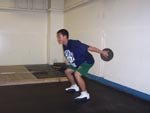
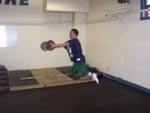

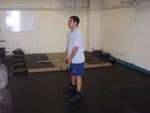
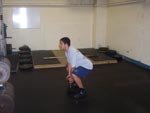
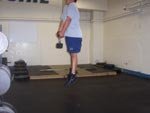
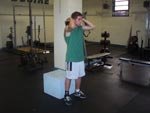
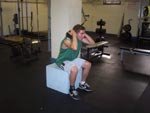
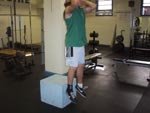
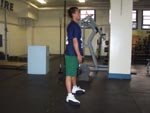
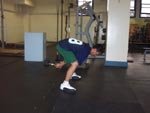
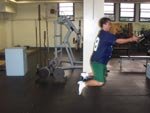
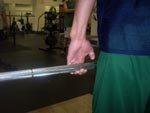
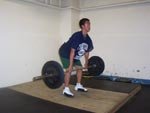
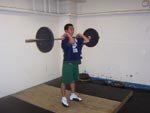
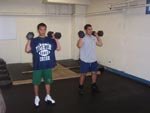
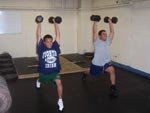
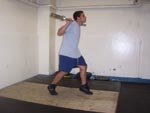
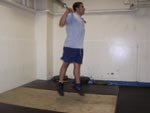
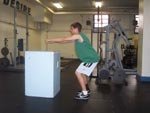
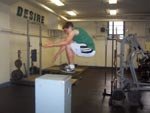
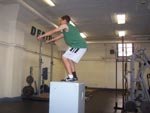

No comments:
Post a Comment